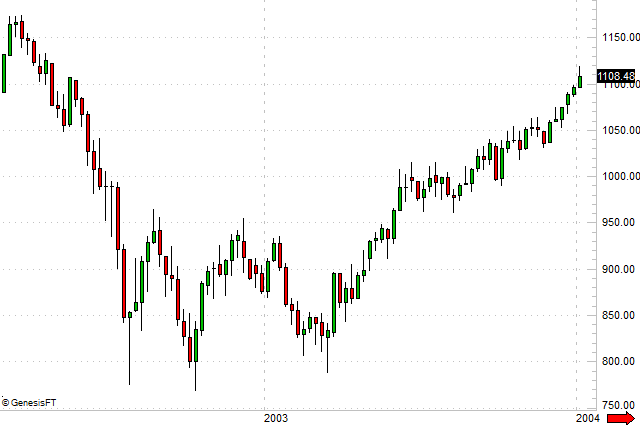Got the Bear Market Blues? Actually, We May Be Closer to the End of It Than the Beginning

As of Tuesday's close, the S&P 500 is down 25% from its January high... five percentage points past what technically qualifies as a bear market, and following two consecutive quarters of negative GDP growth. Nevertheless, the concerns about the market's foreseeable future just now feel like they're being voiced. Ark Funds' Cathie Wood penned a public letter to the Fed just this week, telling its governors they're running the risk of an economic bust. JPMorgan's chief Jamie Dimon fear the United States could slip into a recession within six to nine months.
The timing of the worries begs one question -- where have Dimon and Wood been for the past nine months? The bear market is here. The recession is here. Both have been here for a while. In fact, despite the worry from a couple of high-profile market insiders, we may be closer to the end of misery than the beginning of it.
It's true! Now more than nine months into the bear market, we're likely closer to the end of the average bear market selloff, which on average last 15 months. That figure is dramatically skewed by 2000-2002's 929-day rout though. That's roughly 31 months. The 1980-1982 and 1973-1974 bear market were long-lived as well, although not that long... a little less than two years. Most of them were actually notably shorter than the average of 15 months.
Assuming this one follows the usual timeframe, the bottom's coming sometime in April of the coming year.
We're also closer to the typical bear market bottom in terms of net loss. From peak to trough, the S&P 500 usually loses 36% of its value during bear markets.
 There are of course exceptions to this average as well. The bear market between 2007 and 2009 linked to the subprime mortgage meltdown shaved 56% off of the S&P 500's value. The dot-com implosion back in 2000 dialed the S&P 500 back by 49%. You have to go back to 1973/1974 to see another meltdown of that scope though. Most of the bear markets in this era have been barely in excess of 20%.
There are of course exceptions to this average as well. The bear market between 2007 and 2009 linked to the subprime mortgage meltdown shaved 56% off of the S&P 500's value. The dot-com implosion back in 2000 dialed the S&P 500 back by 49%. You have to go back to 1973/1974 to see another meltdown of that scope though. Most of the bear markets in this era have been barely in excess of 20%.
Not all bear markets end with a big bang and blowout that serves as a capitulation either. Some do. It's just as likely, however, we'll see a slow, easing out of a bear market and back into a bull market. More to the point, despite the recent sharp pullback it's possible the most explosively bearish moves are in the rearview mirror, and that the path to the bottom will be a meandering, choppy one like we saw back in 2003.
Are bear markets getting worse? Perhaps. They may be getting worse because the market's simply getting more volatile, pulling back from equally-extreme rallies. Whatever the case, they all end eventually, and often end sooner than you might expect.
Bottom line? As always, watch closely, and keep your finger on the true pulse of things. In other words, don't sweat the rhetoric too much. The prevailing opinions following several months of bear markets tend to be misguided, rooted in the assumption that nothing changes until they've clearly changed. The reality is, however, forces work to end bear markets as soon as they begin. You just can't see them working, even if the market has a way of sensing they're working.
To this end, know that the stock market tends to recover before it's clear the economy has done the same. That's why you have to watch the market itself rather than listen to the talking heads.
